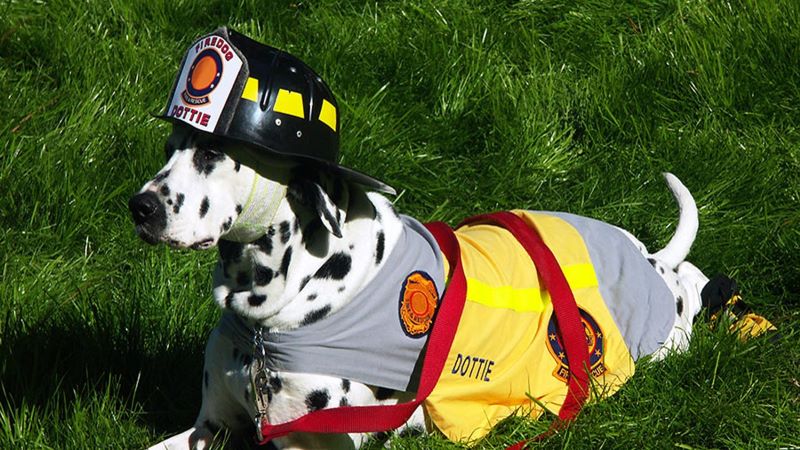According to the National Fire Protection Association, 2014 saw 1,298,000 reported fires in the United States, meaning a fire department was responding every 24 seconds. Have you taken the necessary precautions to make sure your pets aren’t the catalysts for a fire? Do you have a system in place to ensure they’ll be rescued in the event of a fire? In honor of National Pet Fire Safety Day, celebrated on July 15, we have some tips to safeguard your pet.
Prevent accidental fires
- Going flameless. The National Fire Protection Association reported that in 2014, three out of every five candle fires started when something that could burn, such as a blanket, curtain, or mattress was too close to a candle. Curious pets will investigate, so switching to flameless candles can keep your pets from knocking over a lit candle and starting a house fire.
- Being smart in the kitchen. Never leave your stove unattended. Cooking equipment is the leading cause of home fires and of injuries in home fires, according to the NFPA. Pets can turn knobs on your stove when left alone, so remove stove knobs or keep them covered when you are away.
- Using stainless steel or ceramic bowls for your pet’s water dish. Glass bowls left on wooden decks can actually cause a fire to start when the sun’s rays are filtered through the glass and water.
- Corralling your pets. This is especially important if you have a puppy or kitten. Securing your pet in a crate or behind a baby gate in a safe area when you are not monitoring them can keep them away from potential fire starting hazards.
Prepare for fires by...
- Choose monitored smoke detectors. Monitored smoke detectors will alert emergency personnel so that the fire department may be dispatched when you are not home to call. In his article, How to Prevent Your Pet From Starting a Fire, Ken Tudor, DVM, recommends keeping leashes and collars near the entrance to your home so that first responders can find them easily and get your pet to safety as quickly as possible.
- Write out an evacuation plan. Make sure your four-legged friends are part of it. Know the best exits for your pets and make sure you know where they like to hide when they are scared. A few seconds can mean life or death in an emergency situation.
- Have an emergency kit stocked and accessible. See our post, National Animal Disaster Preparedness Day for a detailed list of items to make sure to include in your kit.
- Apply window clings. These will insure that emergency personnel can account for the animals living in your home. Here is a link for a set of 2.
- Enroll your pet in pet insurance before an emergency occurs!
A WBTV news article recently reported a story about a dog who was home alone when his owner’s security system, tied to the fire alarm, started to sound. The security company let the fire department know that there was a dog in the house, and thankfully, the dog was rescued.
“If there is a pet in the home when we respond, we make every effort to get that pet from the house,” said Captain Jackie Gilmore, firefighter for the Charlotte Fire Department.
According to Gilmore, “The more information we have, the easier it is to do our jobs safely.” How will you protect your furry loved ones in the event of a fire? If you do nothing else, invest in the window clings so that first responders know there are pets in your home. Our sweet four- legged friends cannot speak for themselves, so we must be protecting them as best we can.

